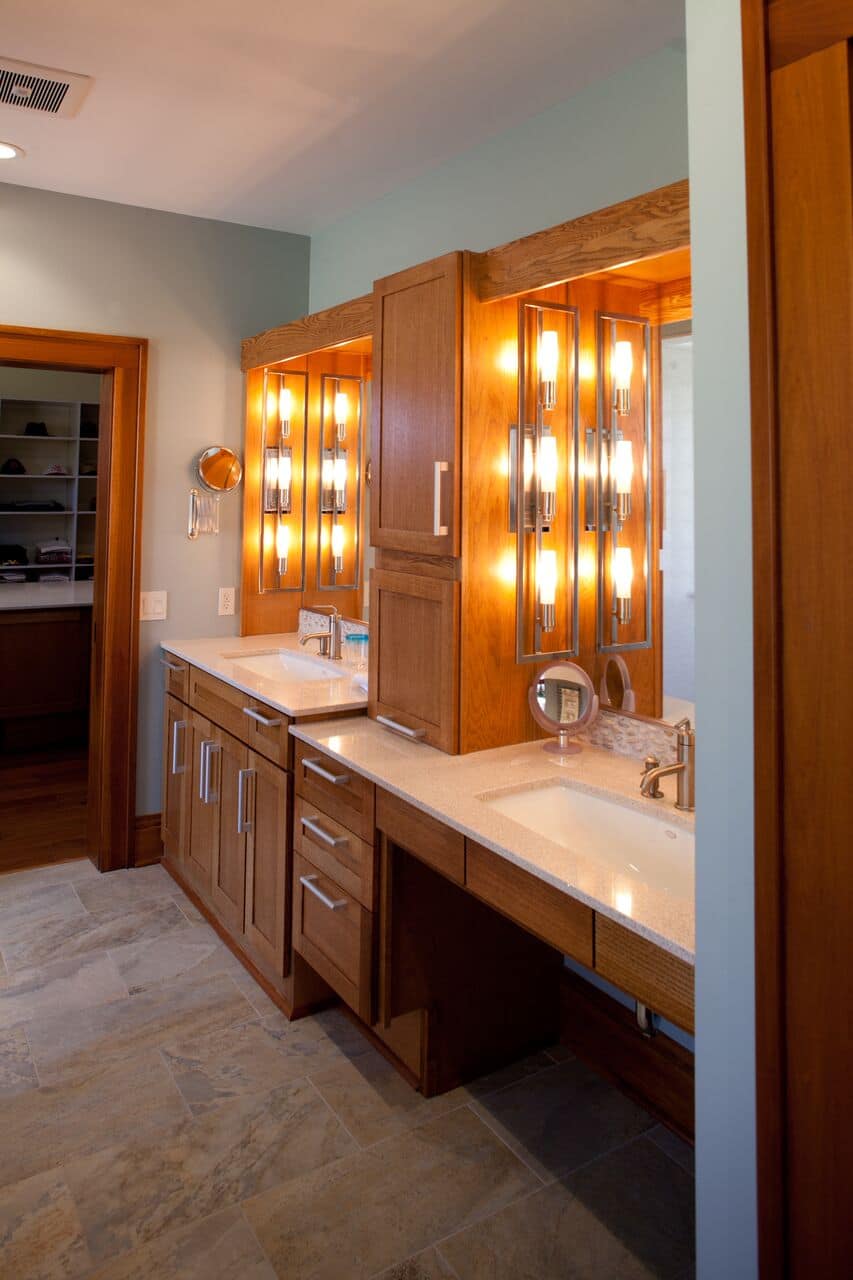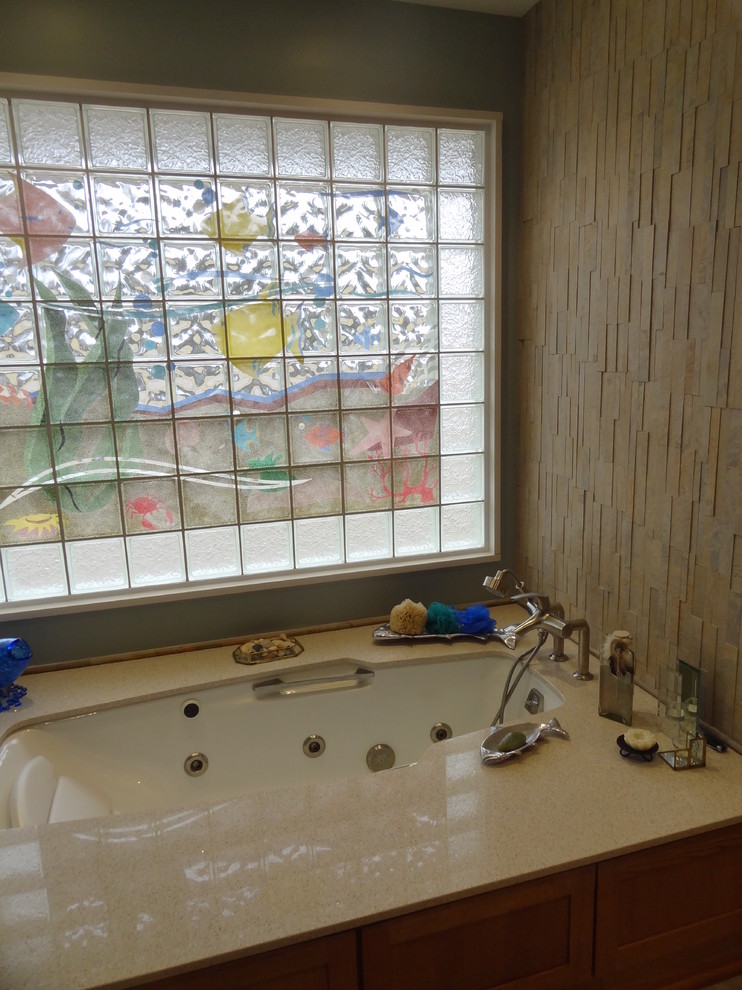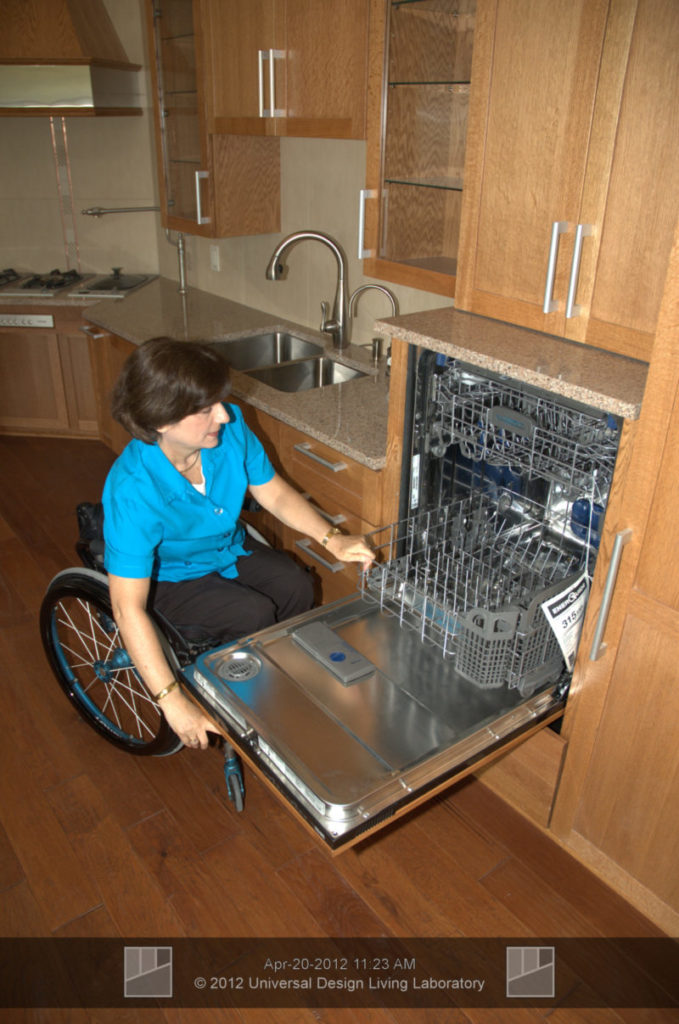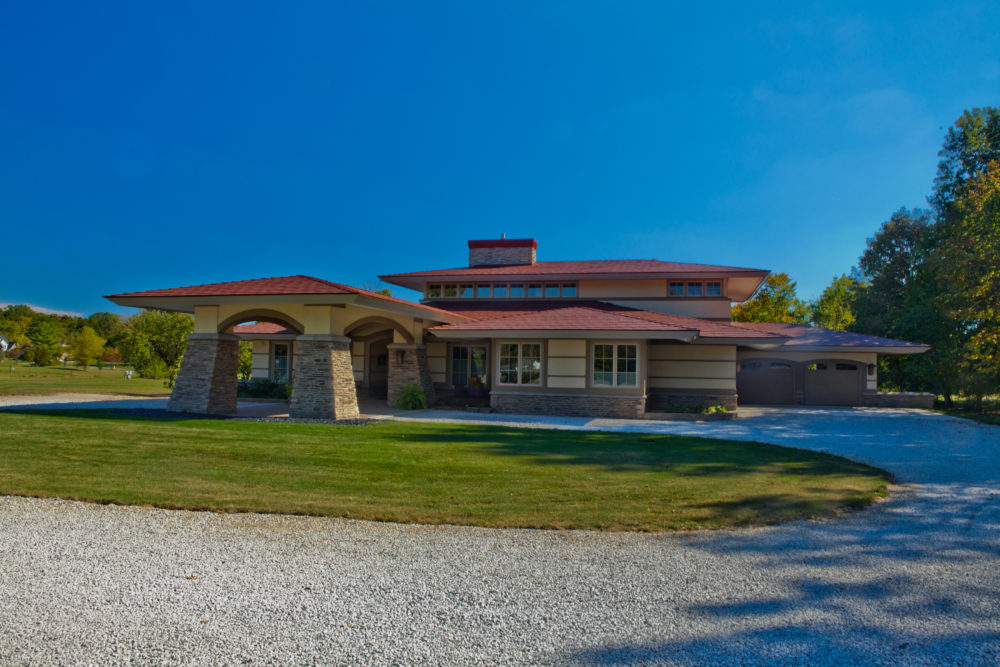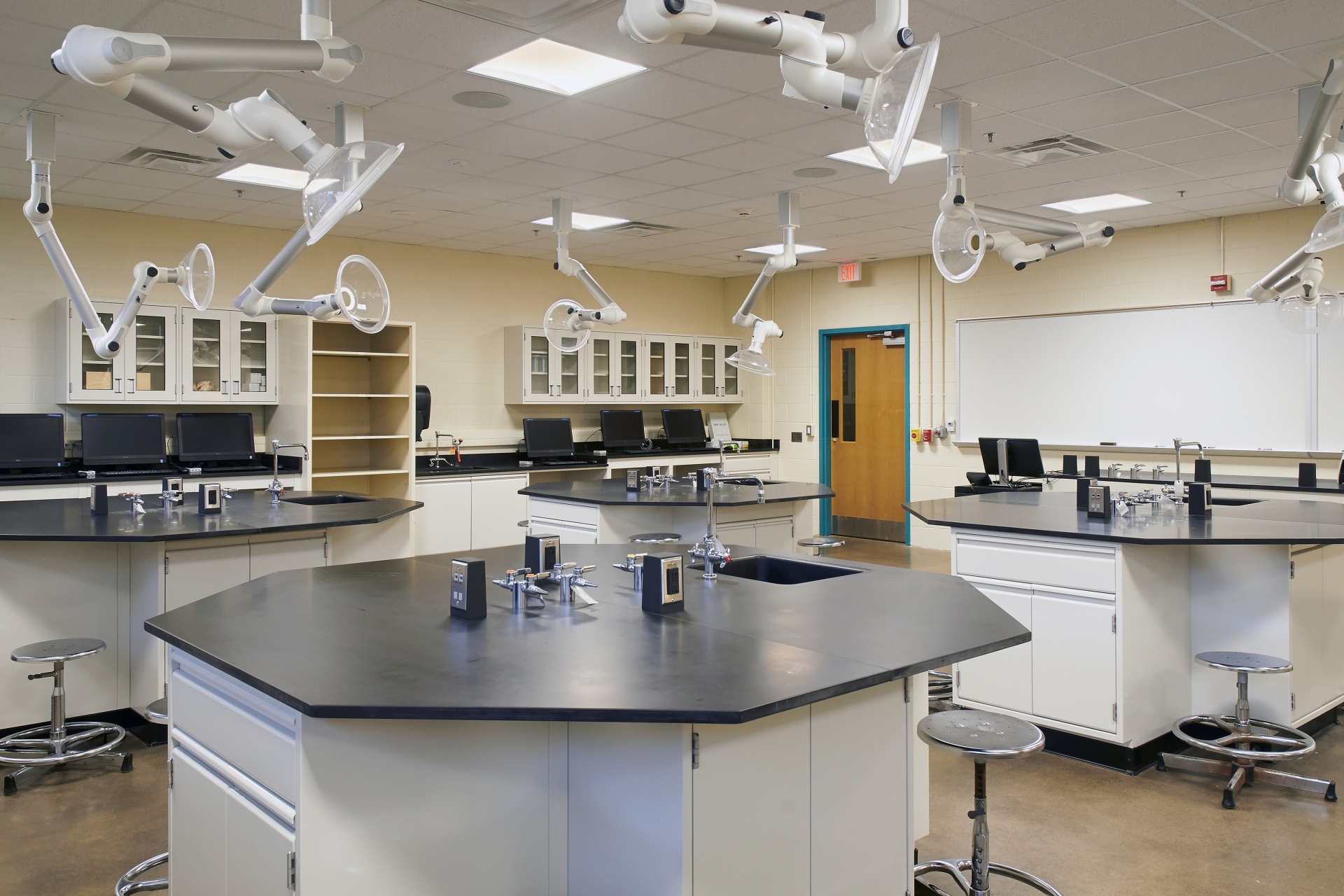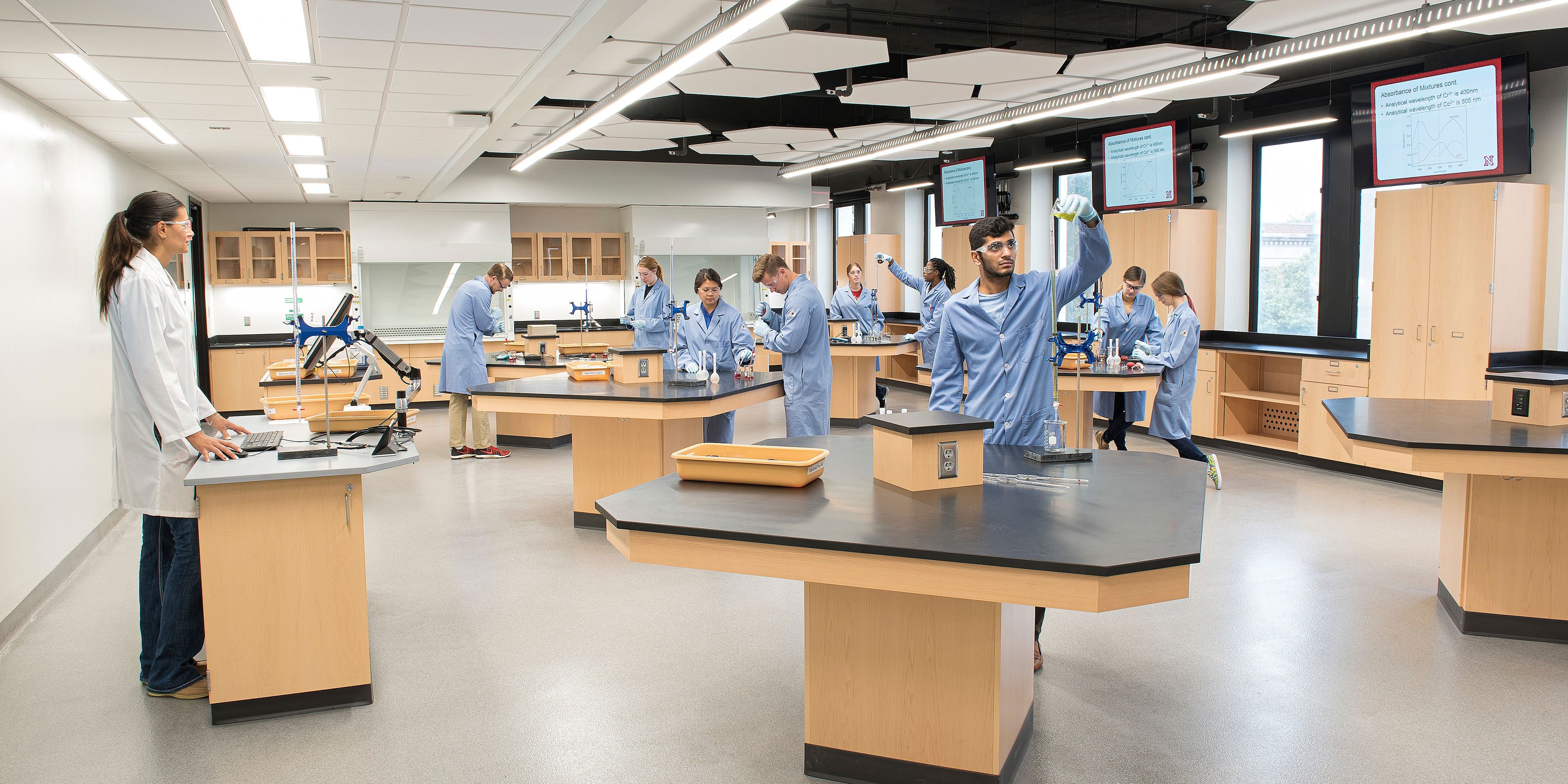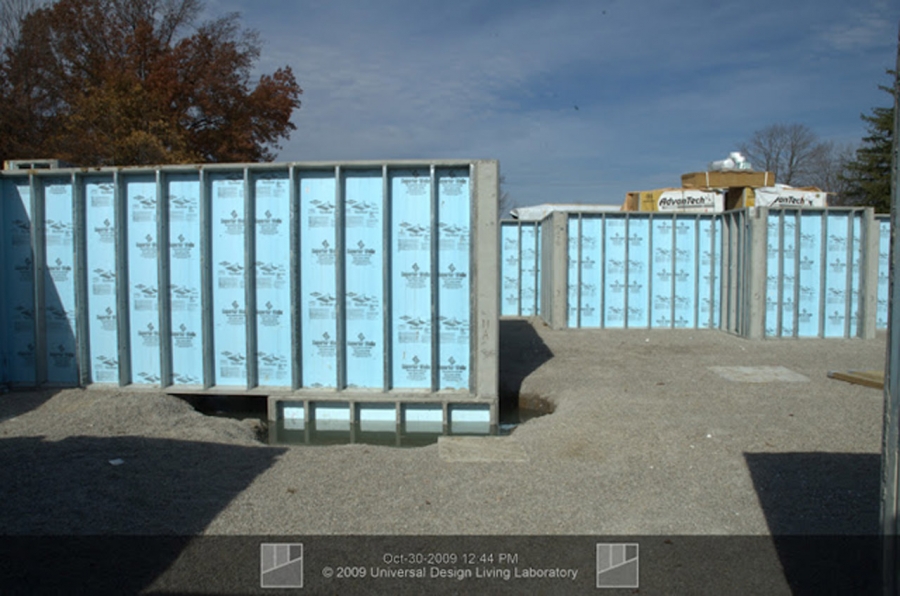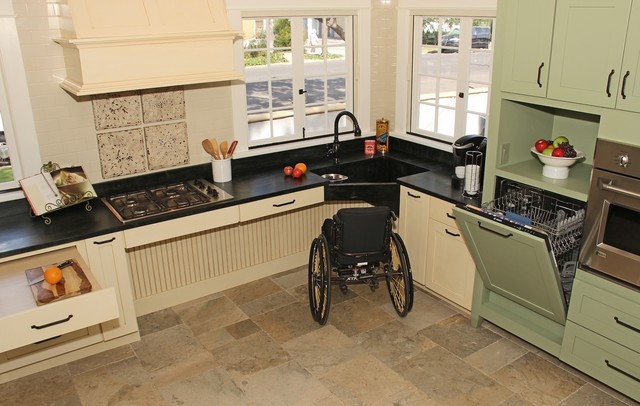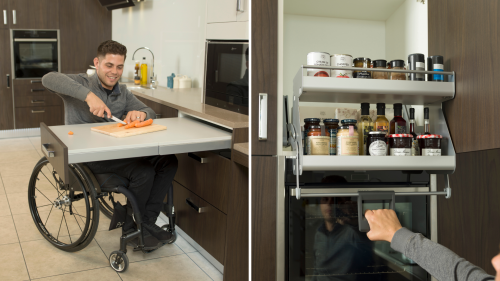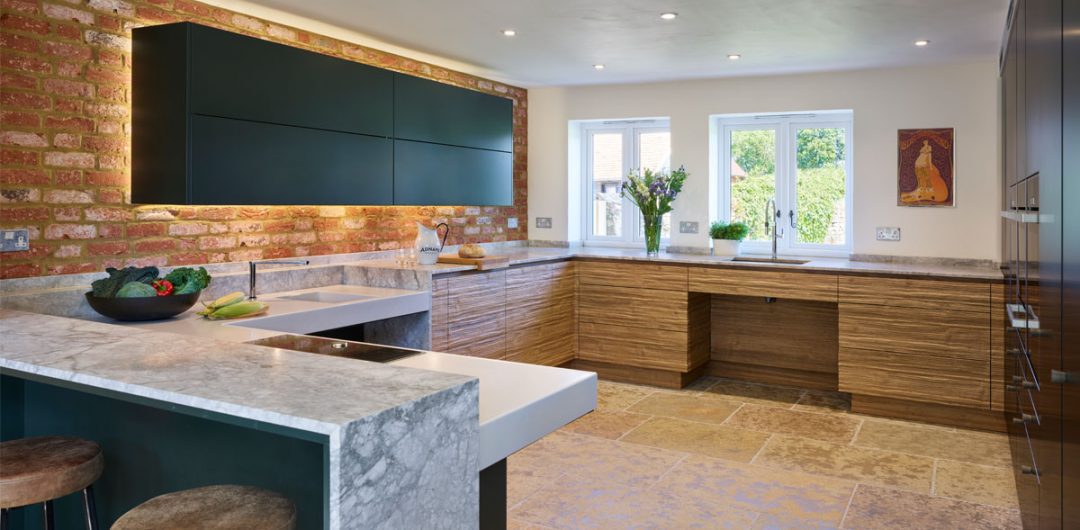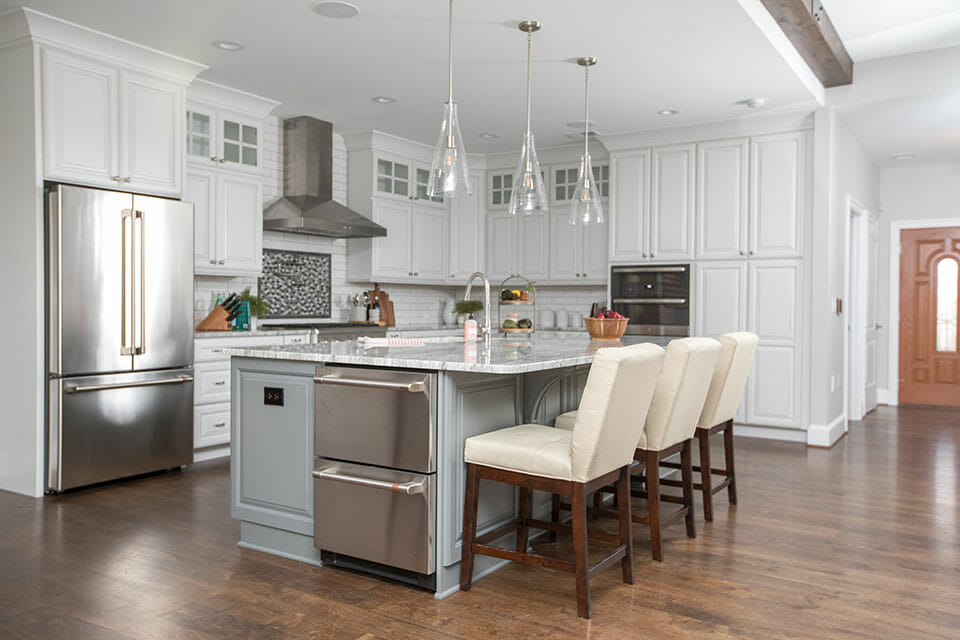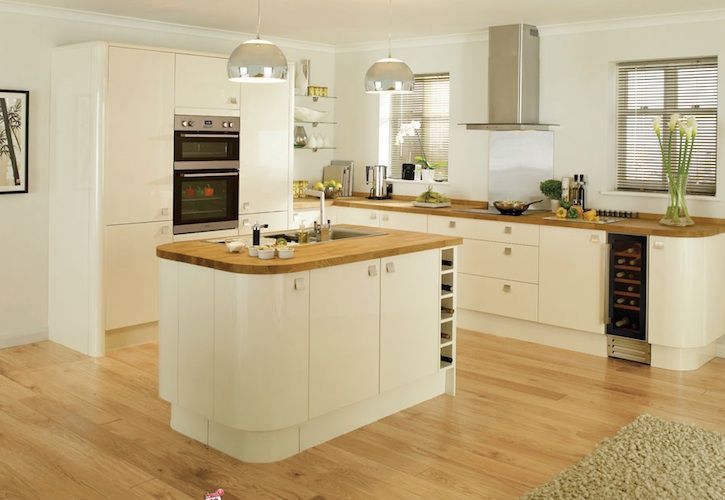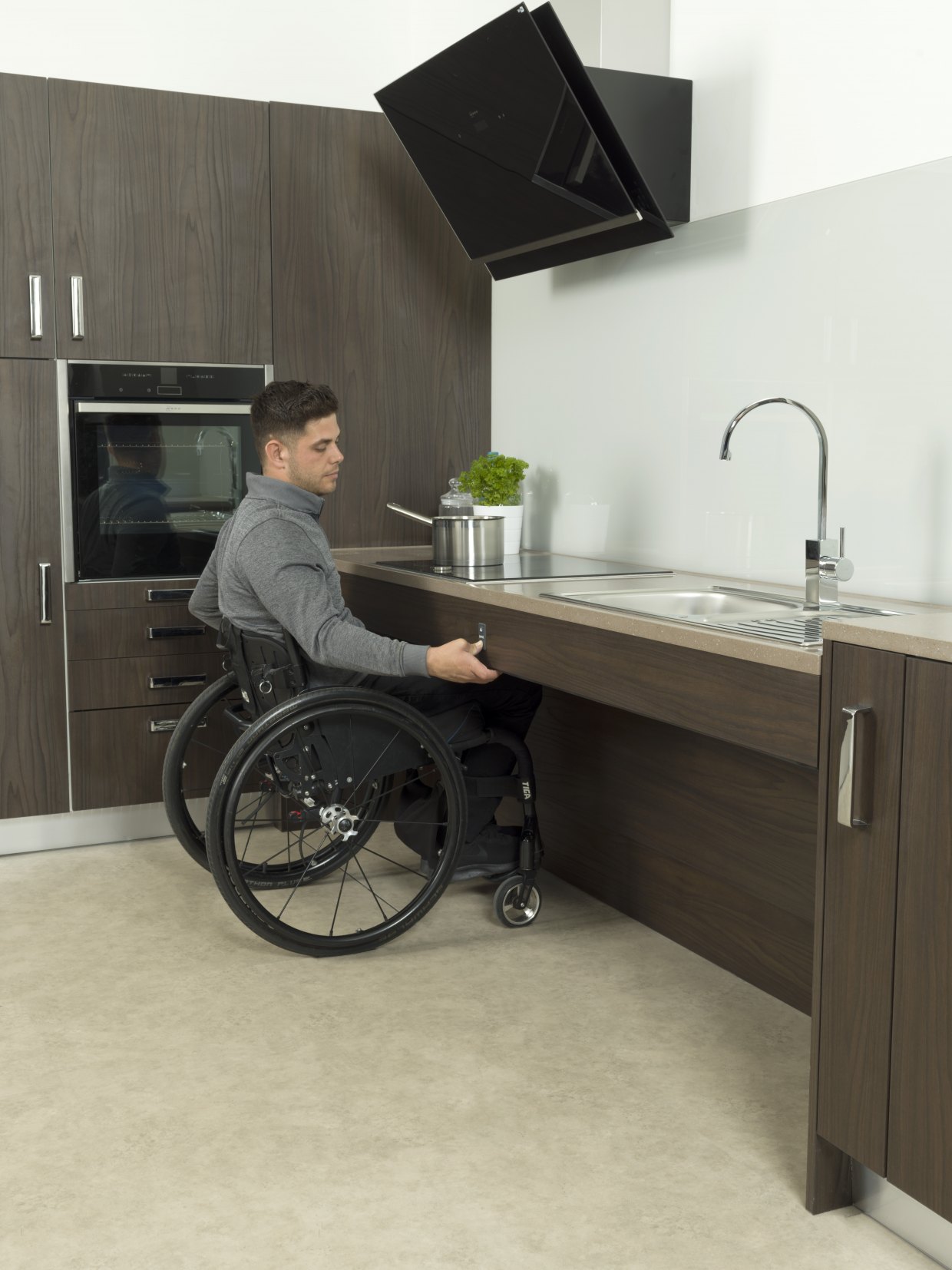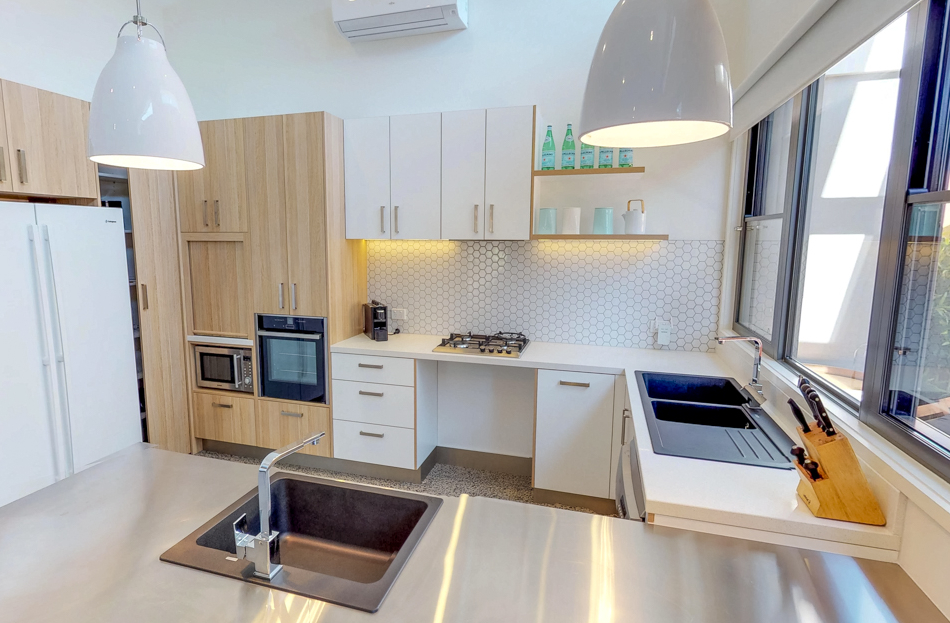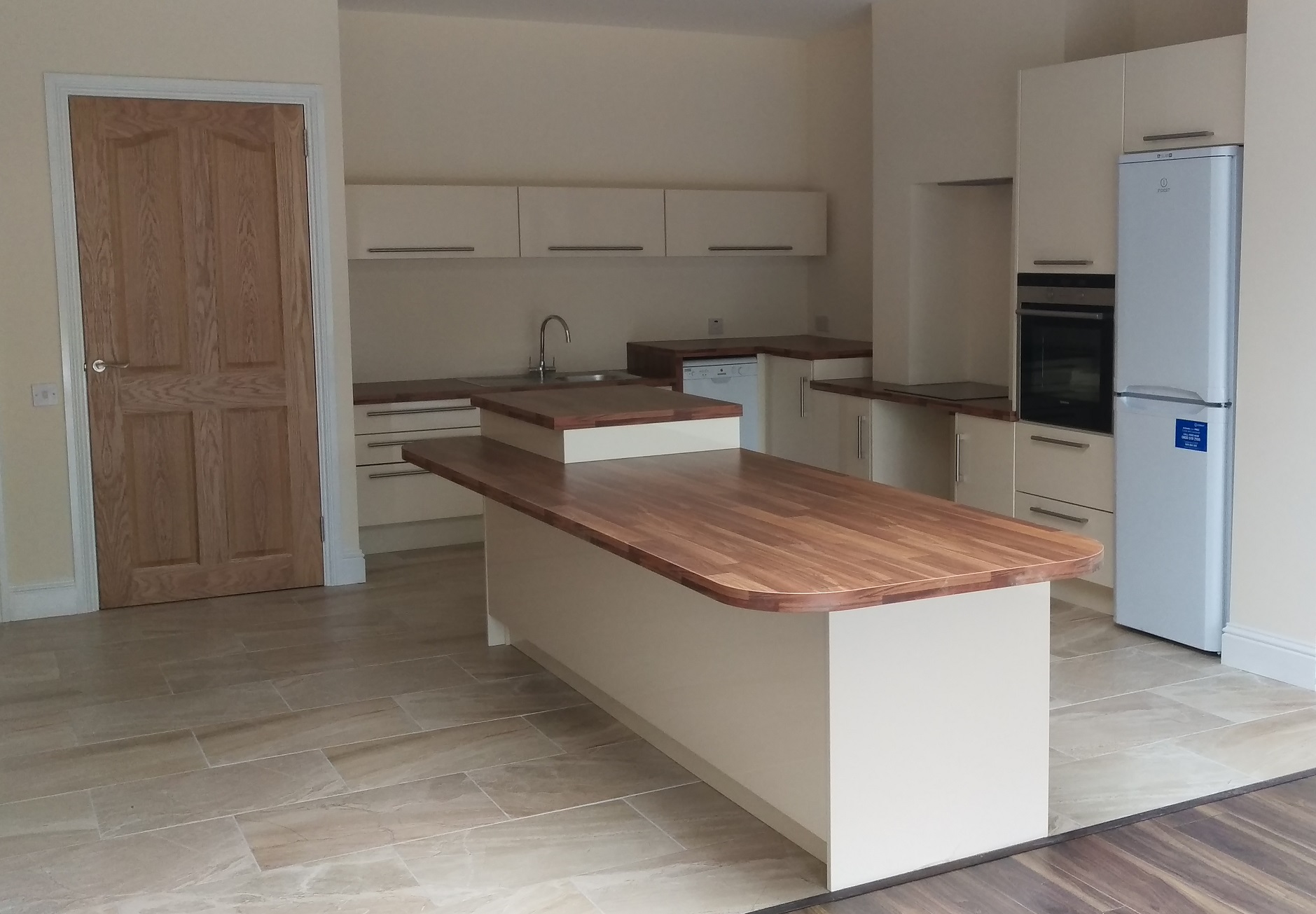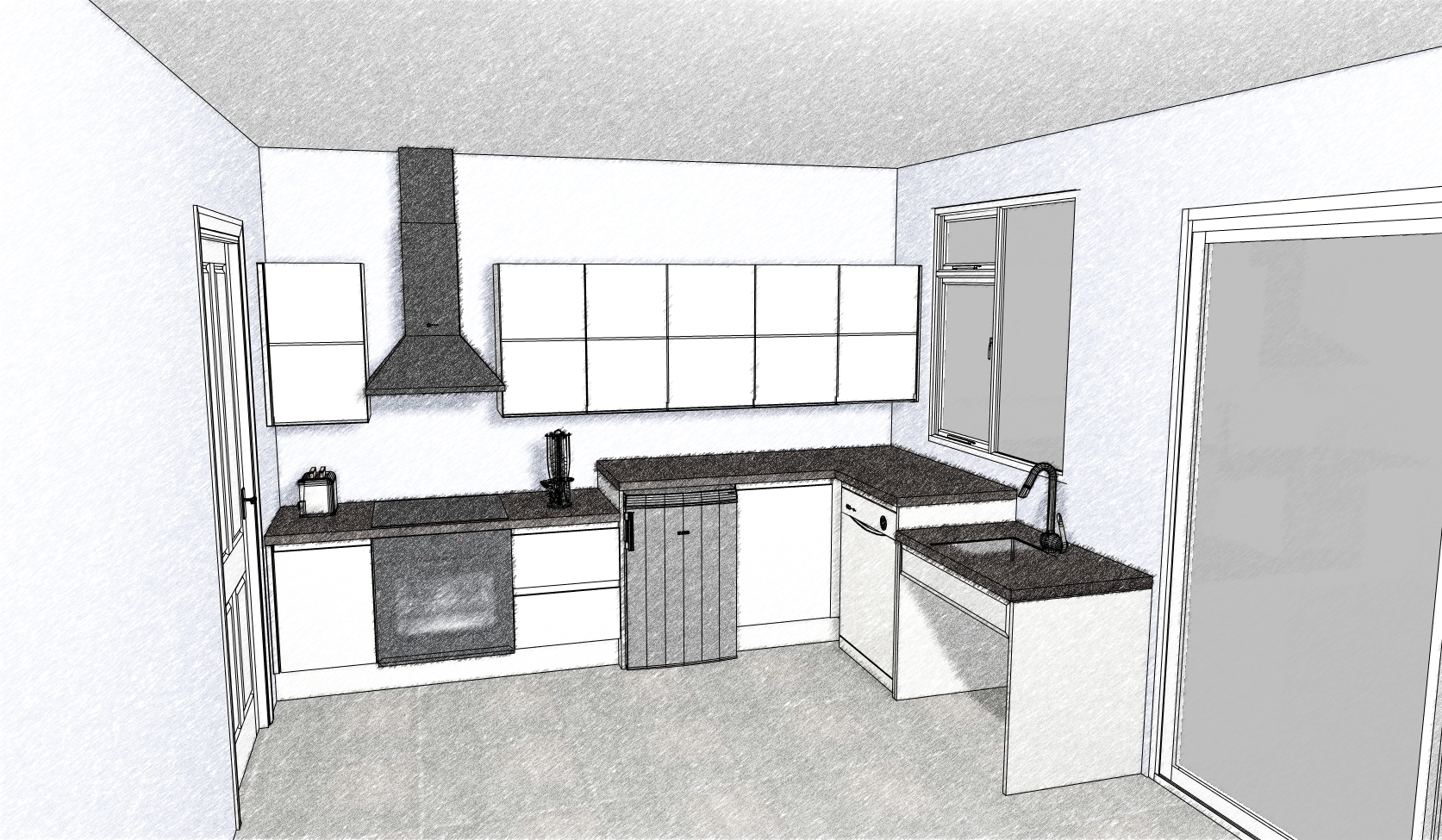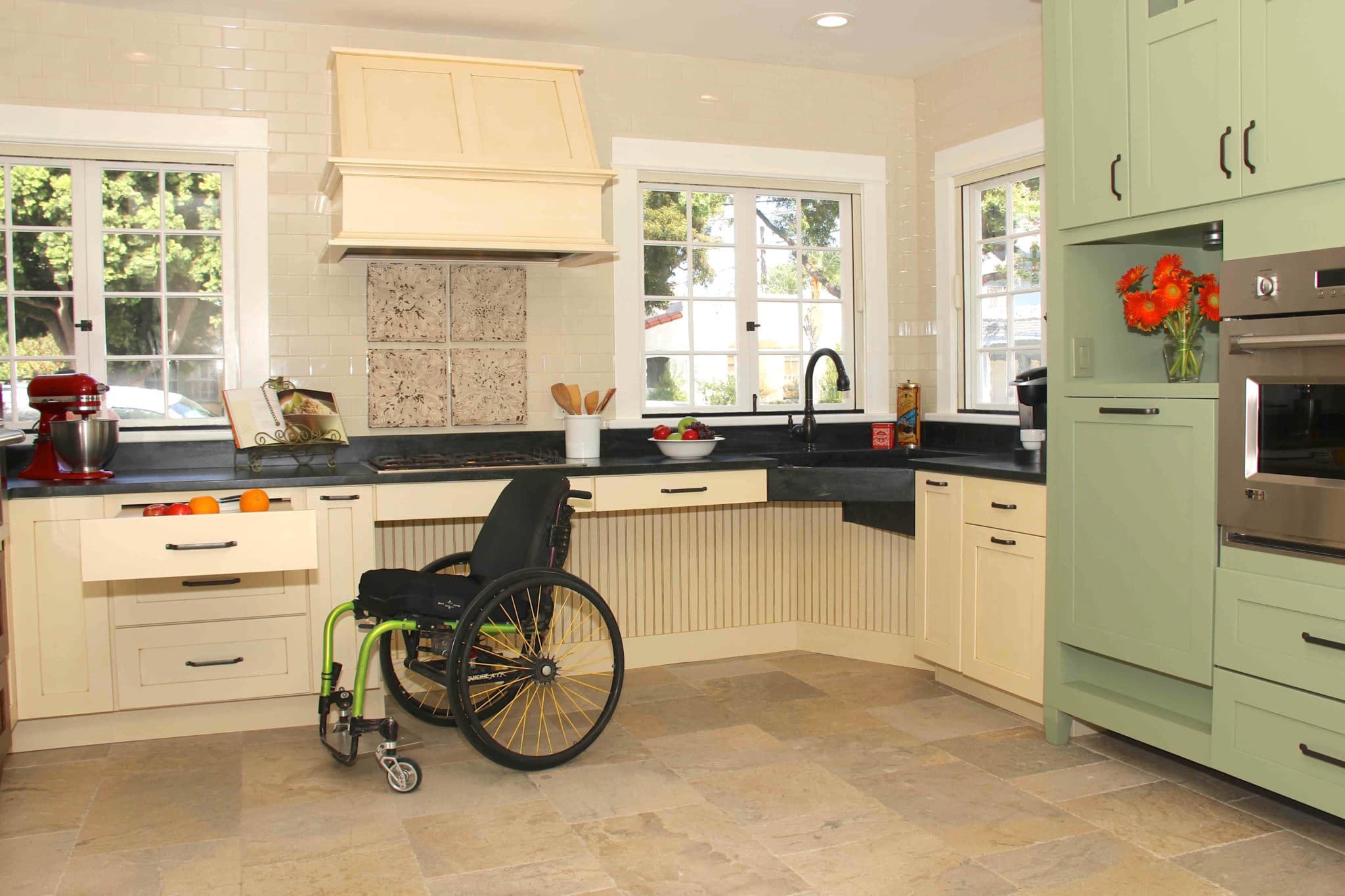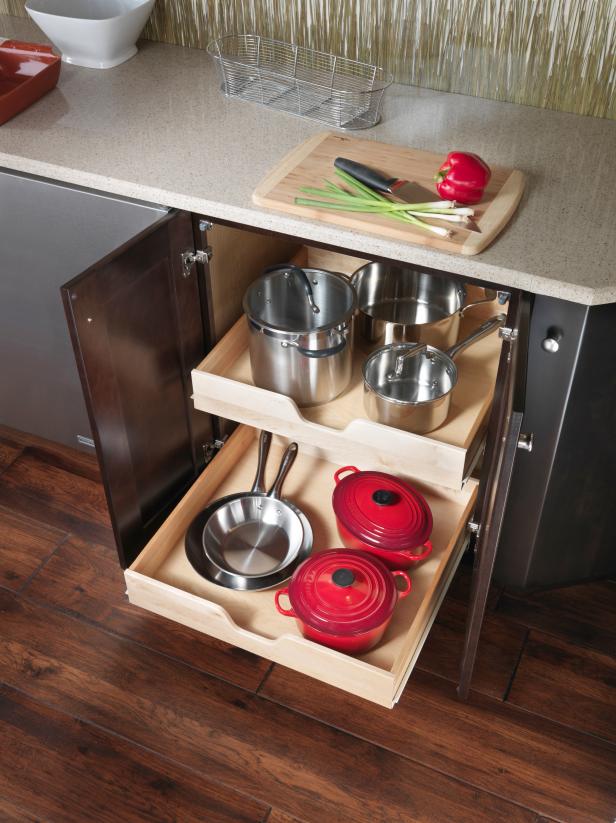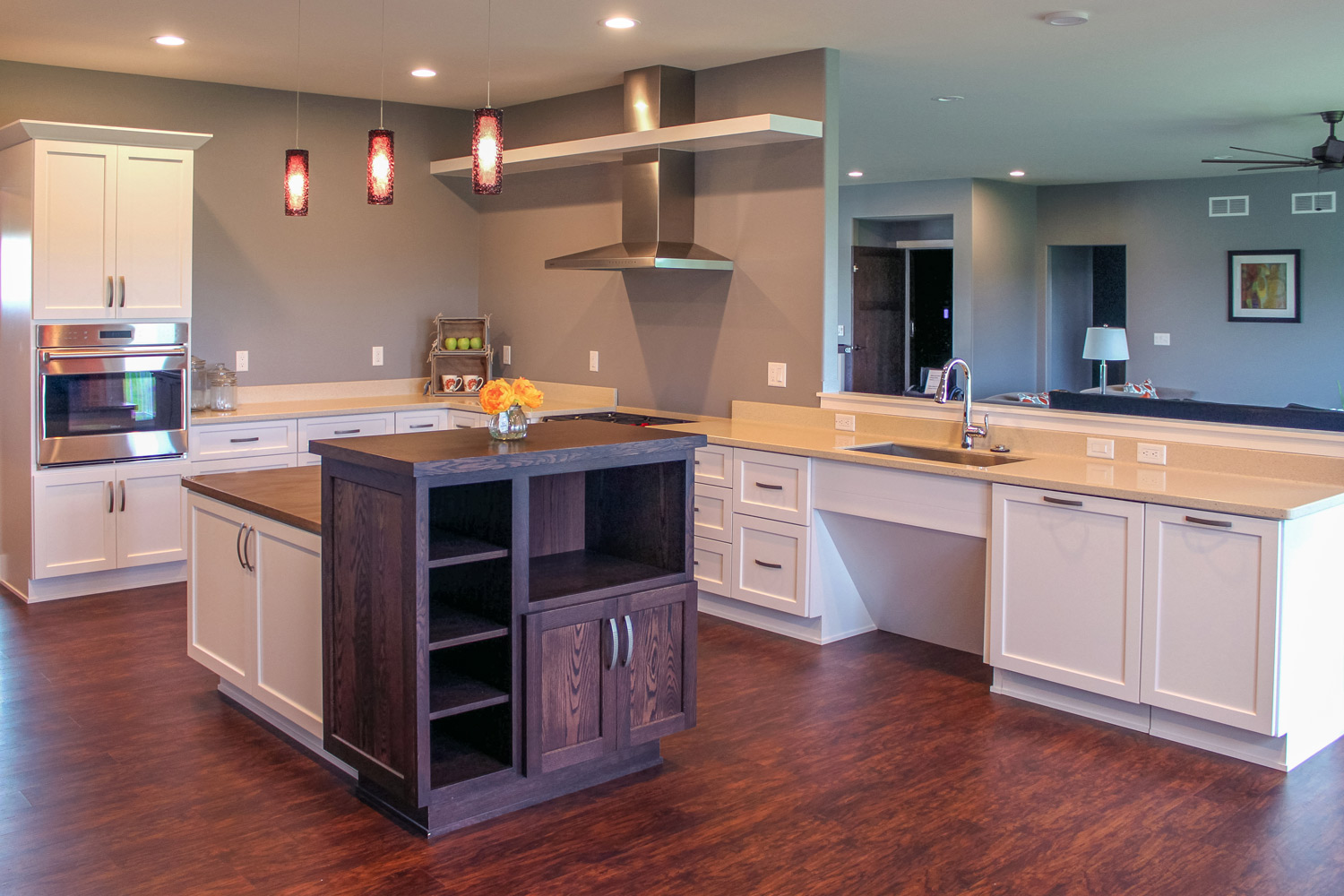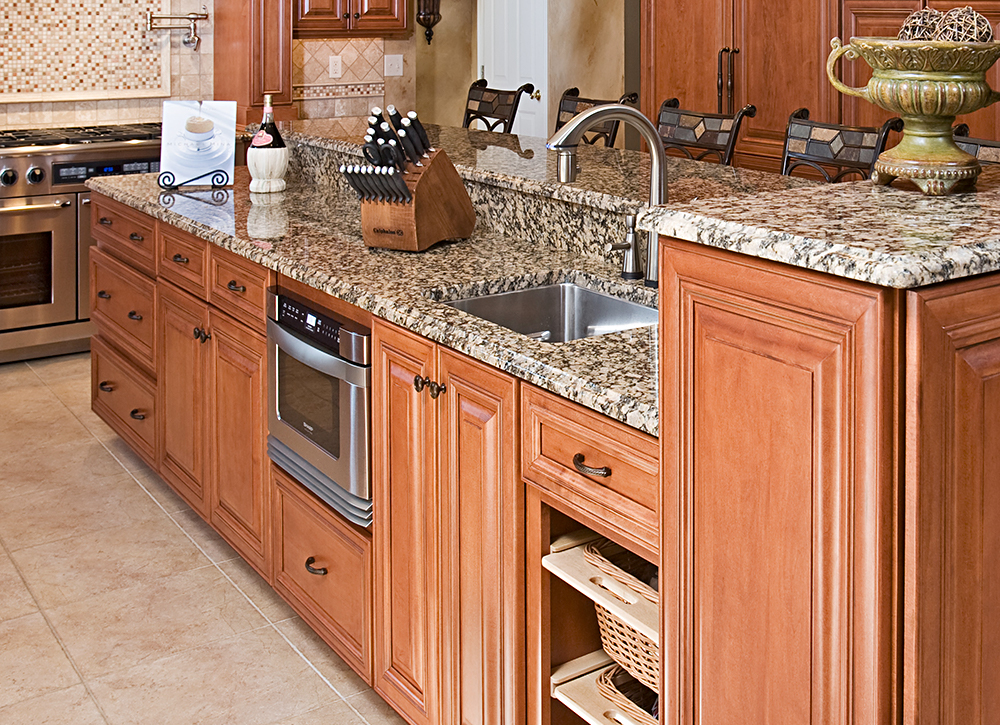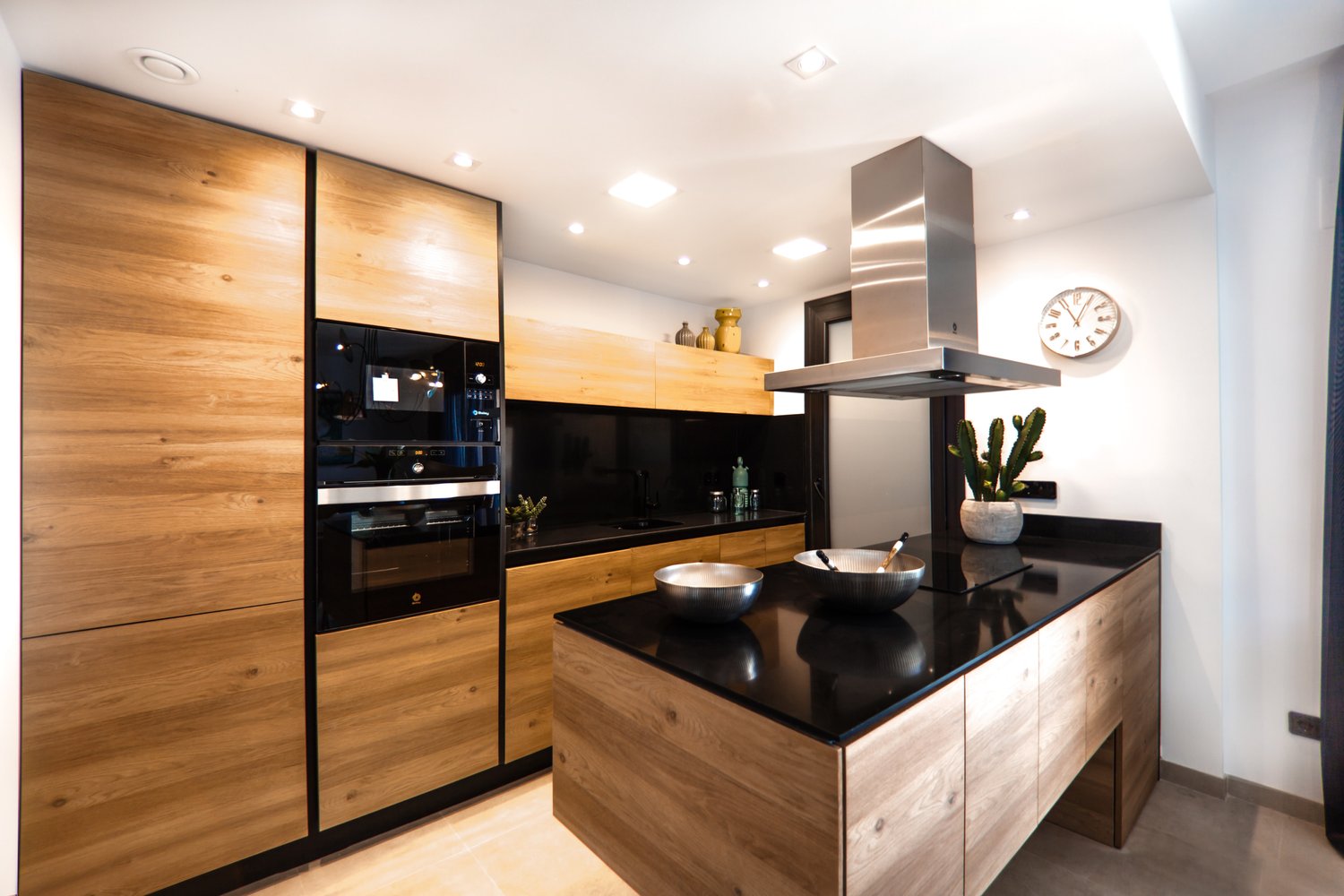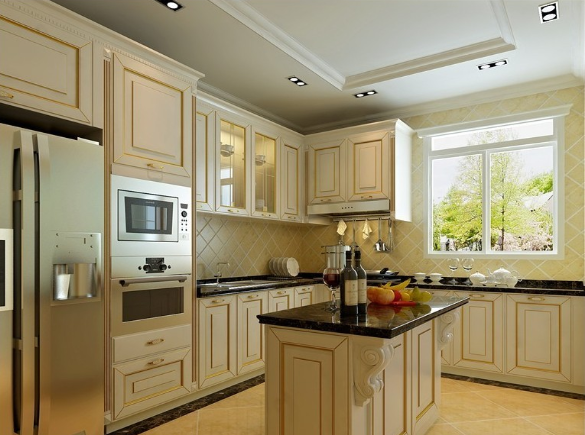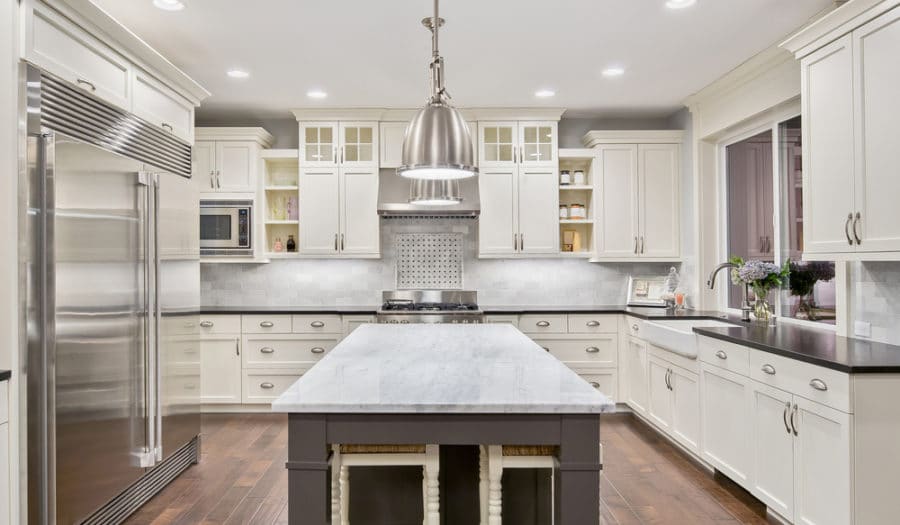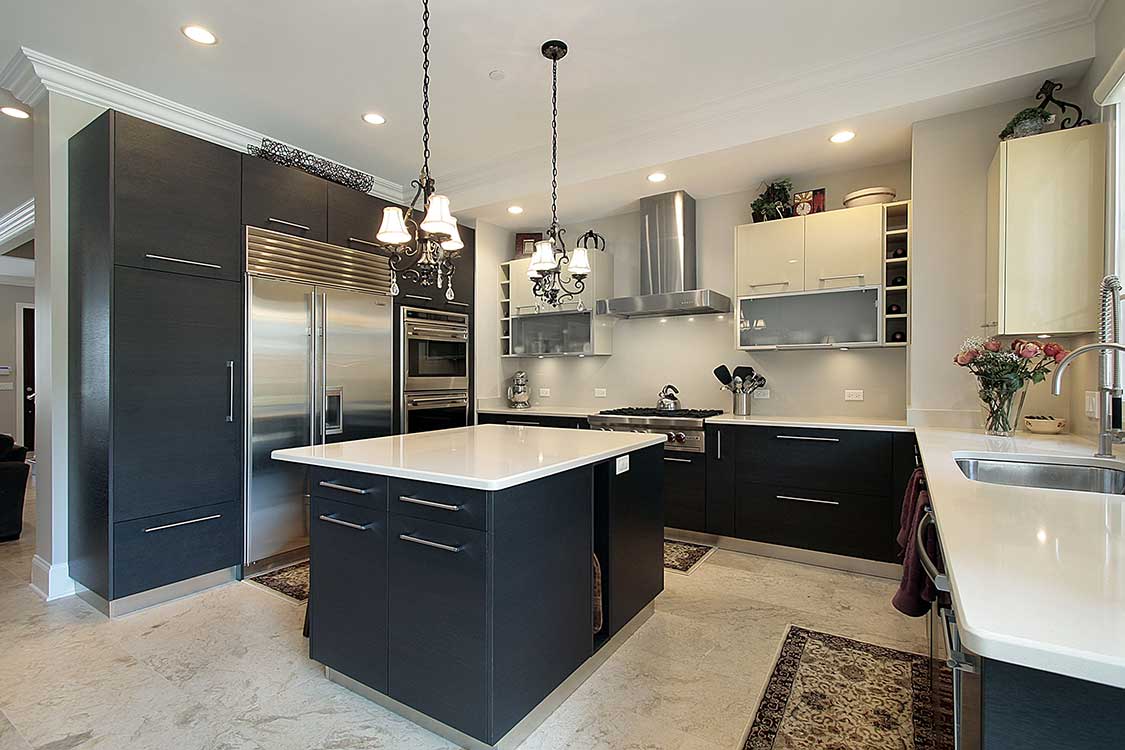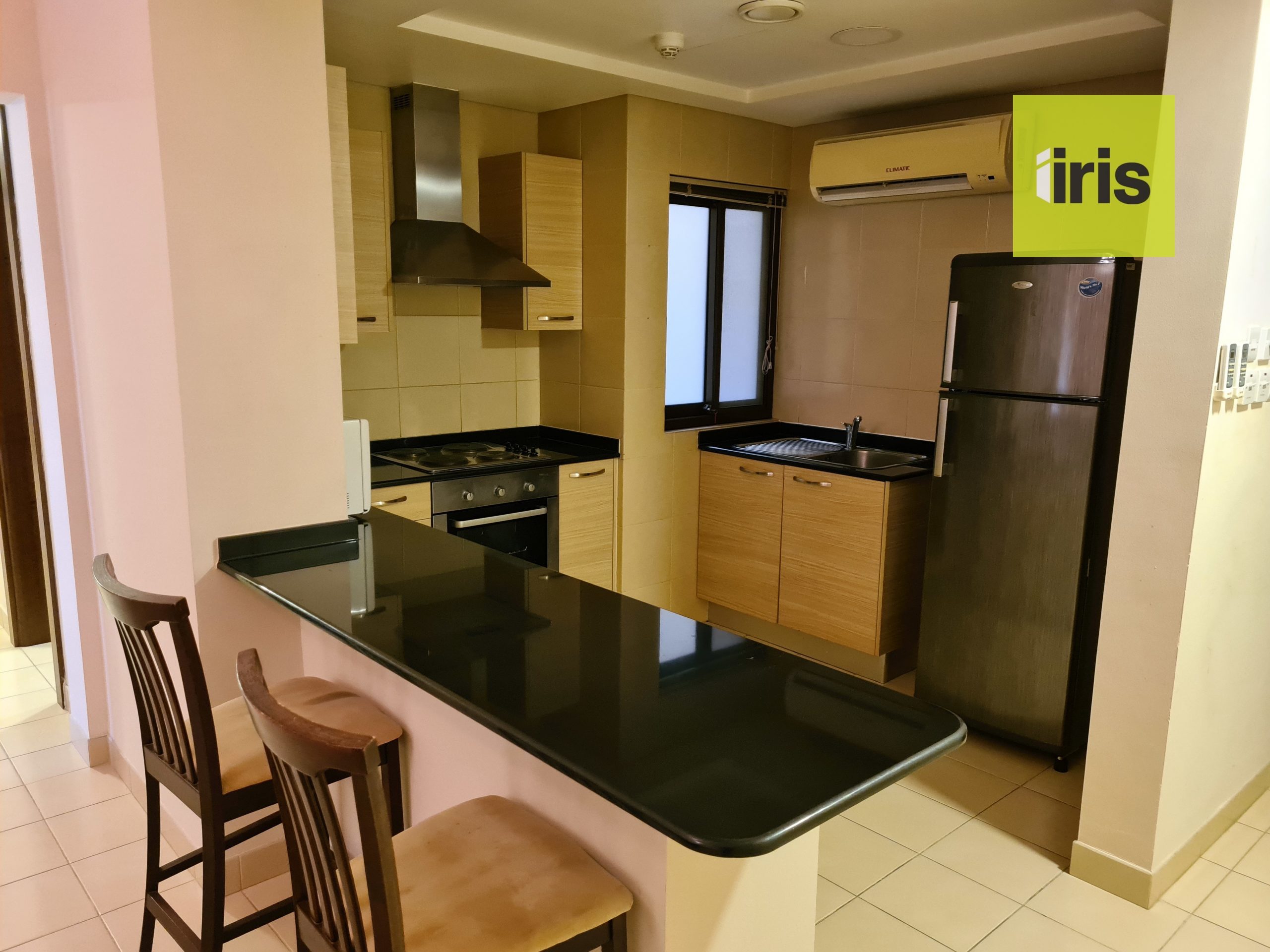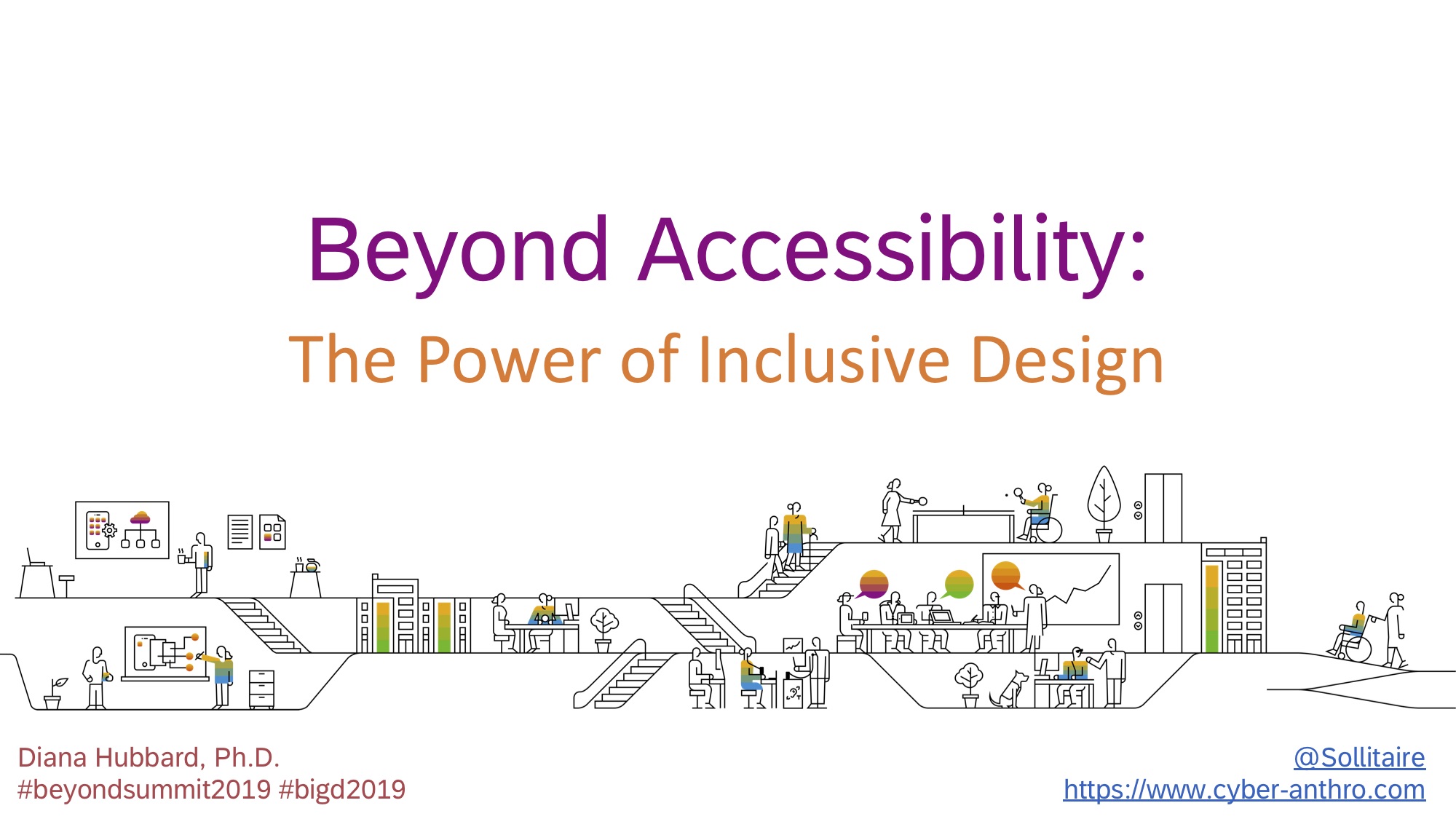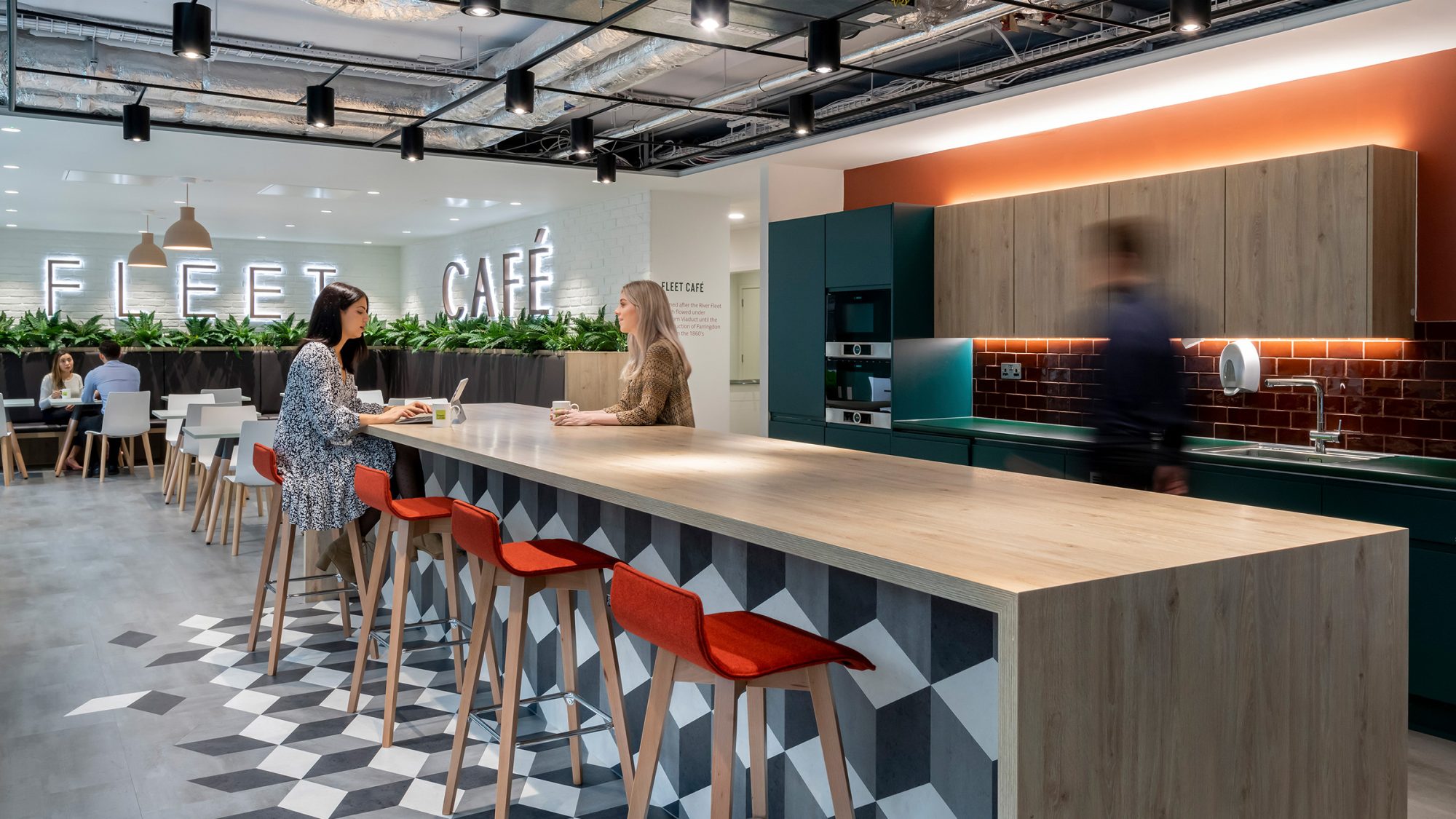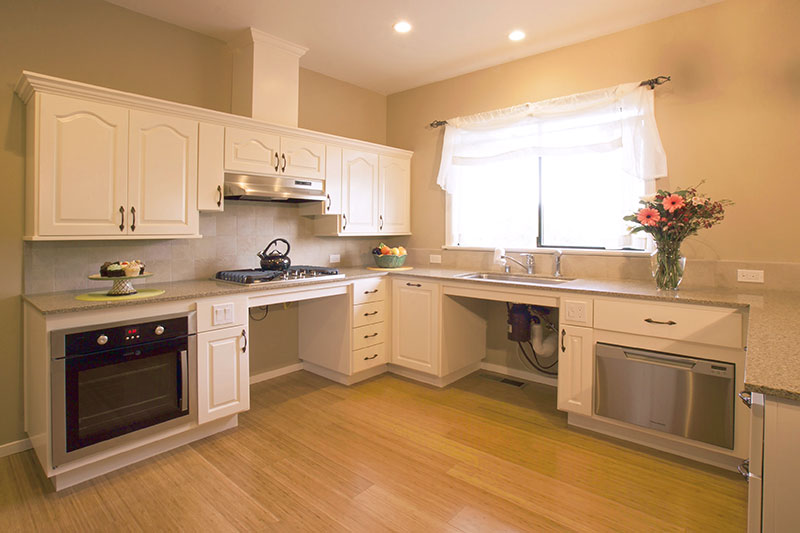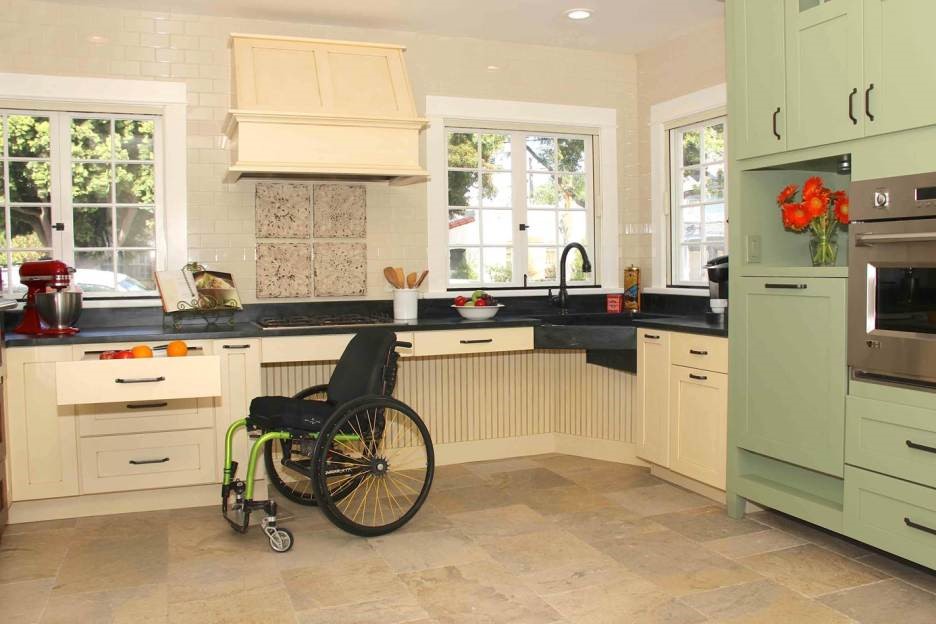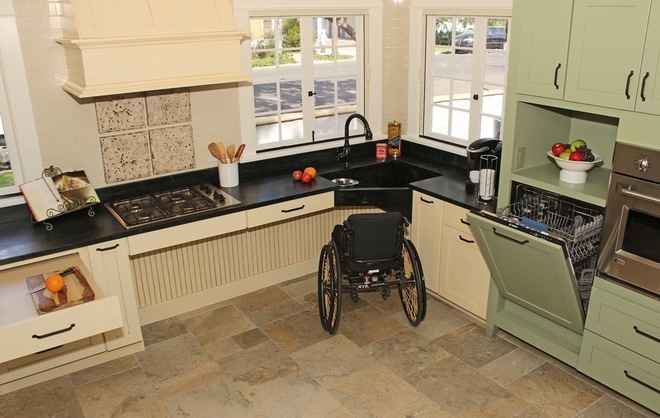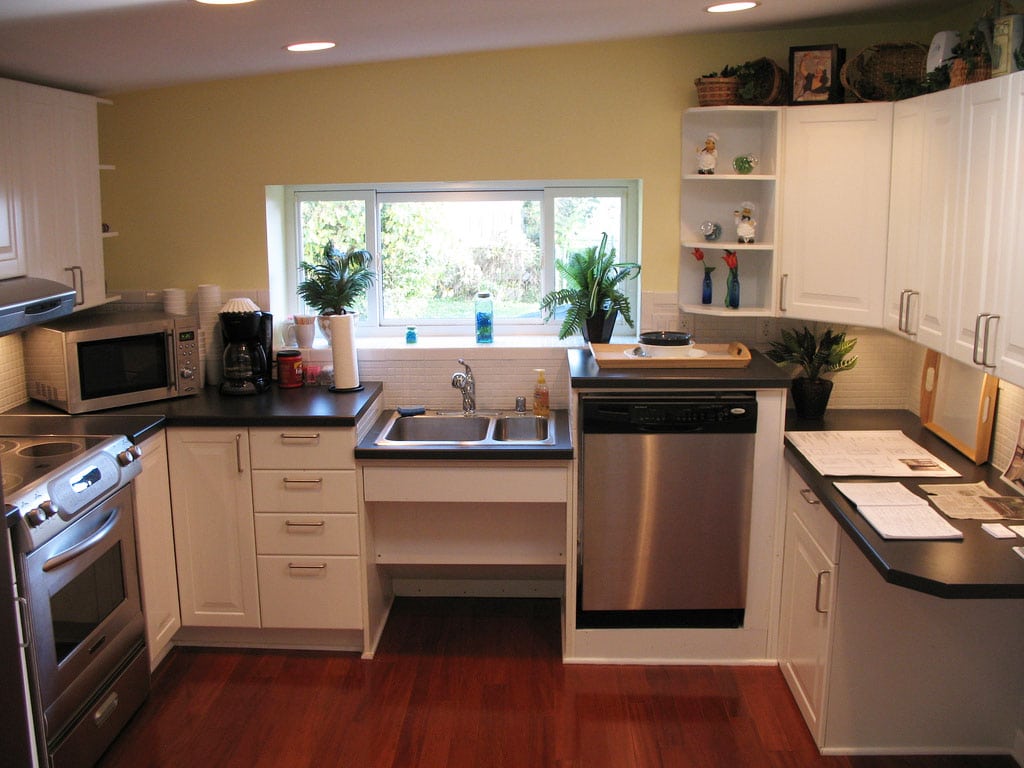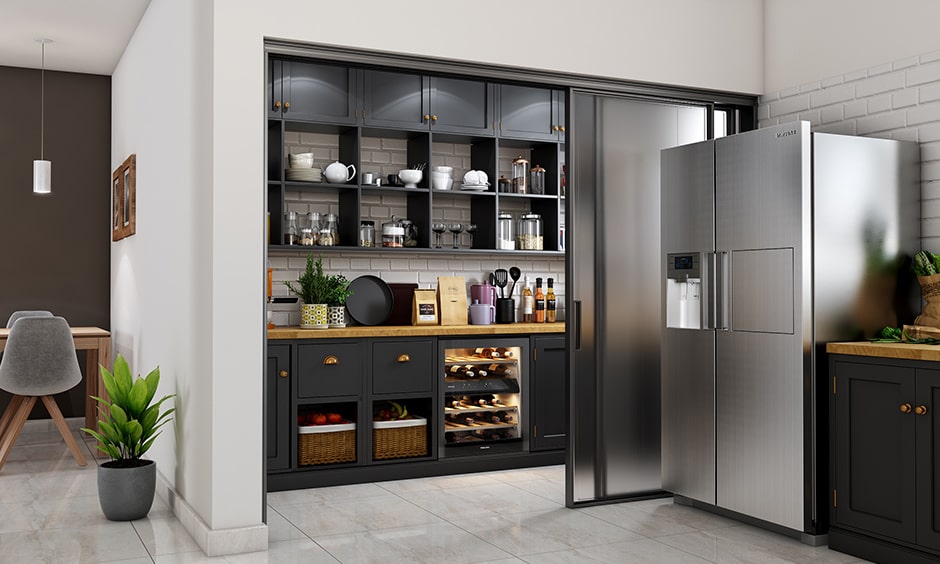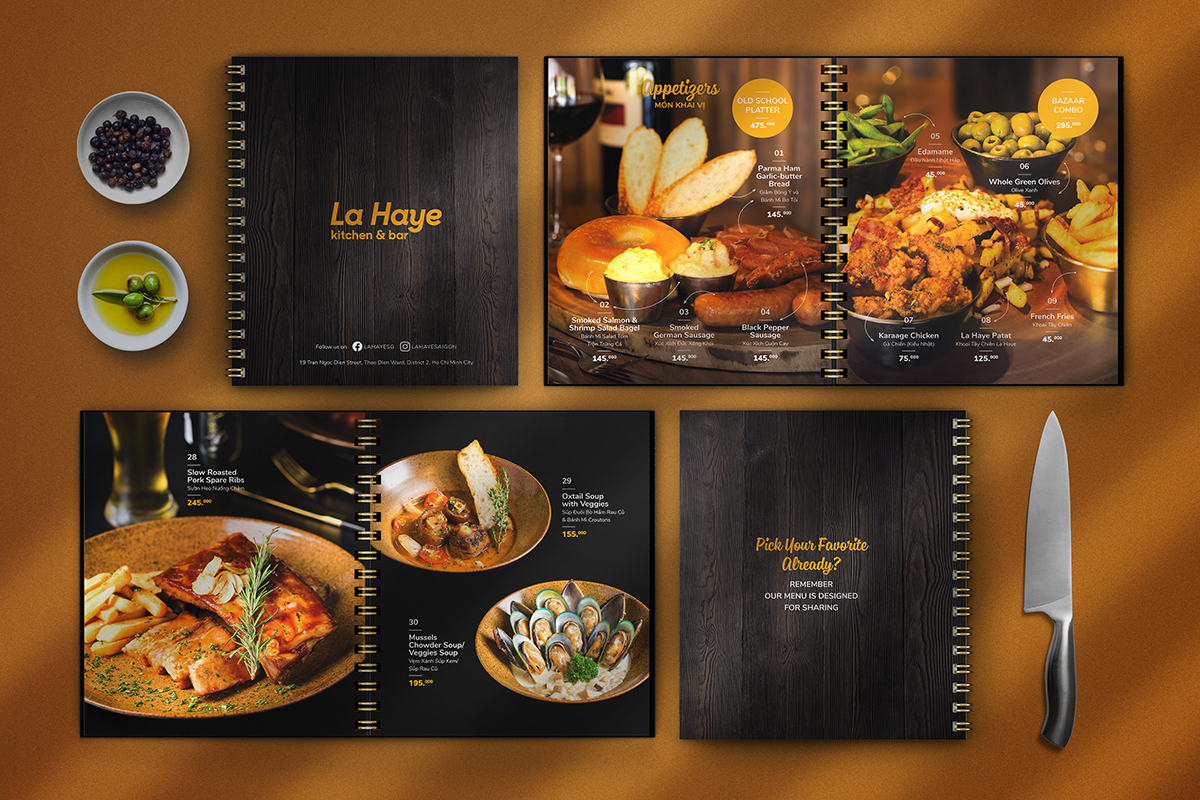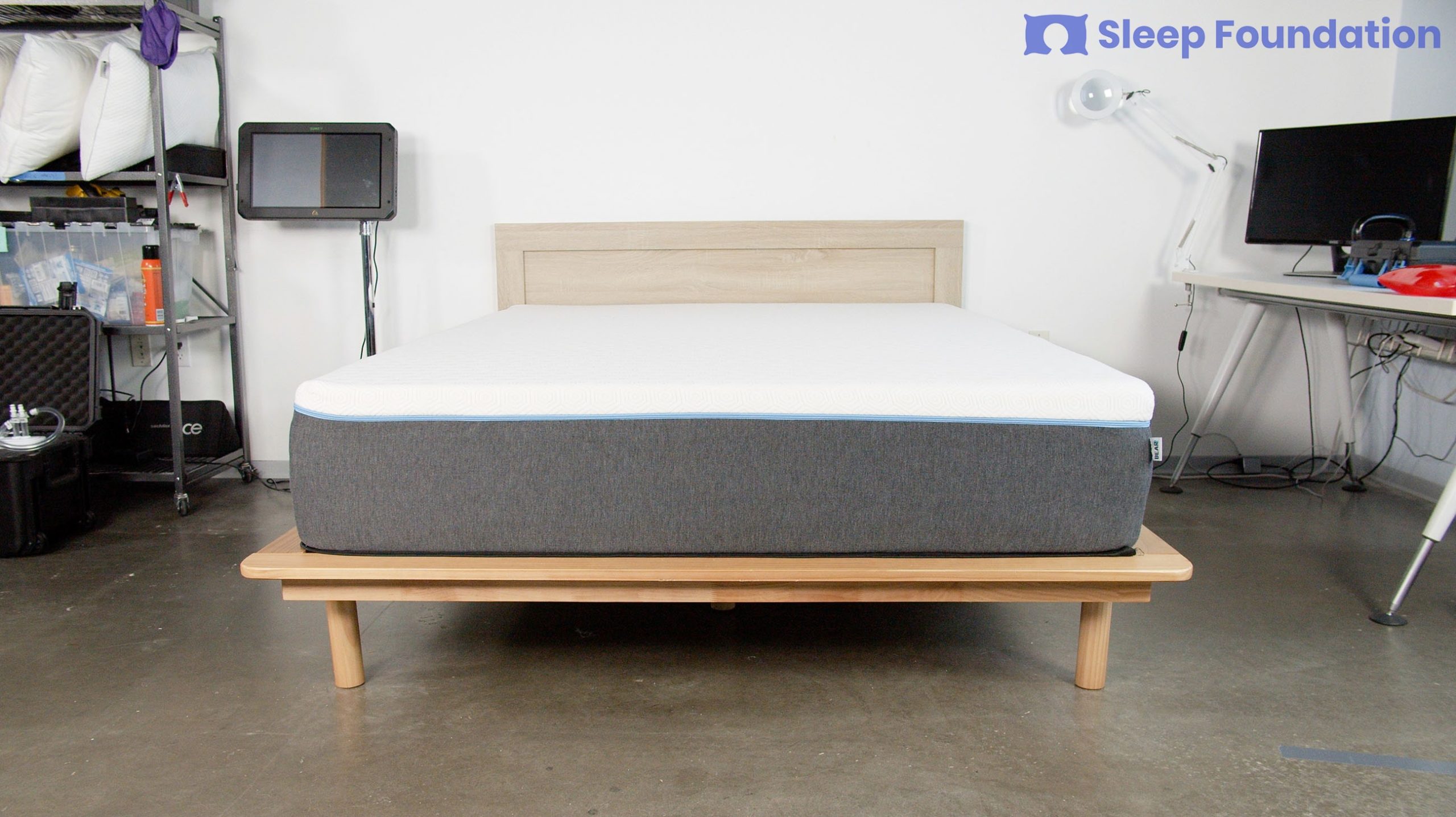The Universal Design Living Laboratory (UDLL) is a showcase home and education center for universal design principles. In particular, the kitchen design at UDLL is a prime example of how universal design can be incorporated into everyday living. The kitchen features accessible and inclusive design elements that cater to individuals of all abilities and ages.Universal Design Living Laboratory
For individuals who use wheelchairs, traditional kitchen layouts can present significant challenges. However, with accessible kitchen design, those in wheelchairs can have full use and independence in the kitchen. This type of design includes lower countertops, pull-out cabinets and drawers, and easy-to-reach appliances, making cooking and meal prep a more manageable task.Accessible Kitchen Design for Wheelchair Users
As we age, our mobility and dexterity may decrease, making everyday tasks like cooking more difficult. That's where inclusive kitchen design comes in. This type of design incorporates features such as non-slip flooring, easy-to-grip cabinet handles, and adjustable countertops to accommodate individuals with limited mobility. It allows older adults to continue living in their homes safely and comfortably.Inclusive Kitchen Design for Aging in Place
In today's world, there is a growing focus on inclusivity, and that applies to kitchen design as well. Adaptable kitchen design takes into consideration the needs of individuals with a range of abilities, including those with physical, sensory, and cognitive disabilities. It includes features such as easy-to-use faucets, touchless appliances, and color-contrasting elements for individuals with visual impairments.Adaptable Kitchen Design for All Abilities
For individuals with disabilities, a traditional kitchen layout can often be a barrier to independent living. However, with barrier-free kitchen design, these barriers are removed. This design incorporates features such as wider doorways and open floor plans, allowing individuals with mobility aids, such as wheelchairs or walkers, to move around the kitchen freely and independently.Barrier-Free Kitchen Design for Independent Living
In multi-generational homes, it's essential to have a kitchen that caters to the needs of all family members, regardless of age or ability. Universal kitchen design achieves this by incorporating elements that are accessible and inclusive for everyone. This can include features such as adjustable countertops and lower cabinets, making it easier for children and older adults to use the kitchen safely and comfortably.Universal Kitchen Design for Multi-Generational Homes
For individuals with specific disabilities, such as mobility or sensory impairments, a standard kitchen design may not be practical. However, with accessible kitchen design, these individuals can have a kitchen that meets their specific needs. This can include features such as pull-out shelves and open shelving for easy access, as well as specialized appliances designed for individuals with disabilities.Accessible Kitchen Design for People with Disabilities
Individuals with mobility challenges, such as those who use wheelchairs or have limited mobility in their hands, may struggle with traditional kitchen layouts. However, inclusive kitchen design takes these challenges into consideration and incorporates features such as pull-down shelves, touchless faucets, and easy-to-reach appliances, making cooking and meal prep more manageable.Inclusive Kitchen Design for Mobility Challenges
Aging in place is a growing trend, and with it comes the need for adaptable living spaces, including the kitchen. Adaptable kitchen design allows individuals to make changes to their kitchen as their needs and abilities change over time. This can include features such as adjustable countertops and cabinets, making it easier for individuals to continue living in their homes comfortably as they age.Adaptable Kitchen Design for Aging in Place
Universal living is all about creating spaces that are accessible and inclusive for individuals of all abilities. In the kitchen, this means incorporating barrier-free design elements that allow for easy movement and use for everyone. This can include features such as open floor plans, non-slip flooring, and easy-to-reach appliances, making the kitchen a safe and welcoming space for all.Barrier-Free Kitchen Design for Universal Living
The Importance of Living in Place Kitchen Design

Creating a Safe and Accessible Kitchen
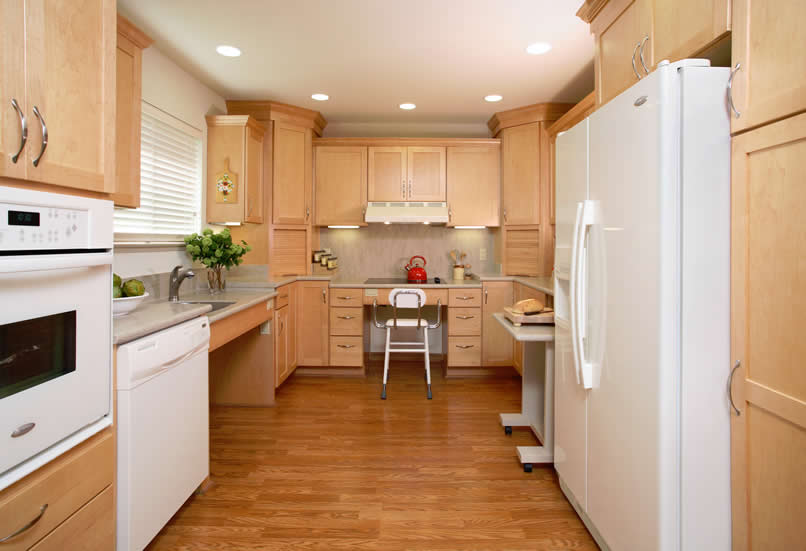 One of the main goals of living in place kitchen design is to create a space that is safe and accessible for everyone, regardless of their age or physical abilities. This is achieved by incorporating universal design principles, which focus on making spaces usable for people of all ages and abilities. This means having wider doorways and hallways, lower countertops, and easy-to-reach storage options. By implementing these features, individuals with limited mobility or disabilities can navigate the kitchen with ease and without the risk of injury.
One of the main goals of living in place kitchen design is to create a space that is safe and accessible for everyone, regardless of their age or physical abilities. This is achieved by incorporating universal design principles, which focus on making spaces usable for people of all ages and abilities. This means having wider doorways and hallways, lower countertops, and easy-to-reach storage options. By implementing these features, individuals with limited mobility or disabilities can navigate the kitchen with ease and without the risk of injury.
Promoting Independence and Comfort
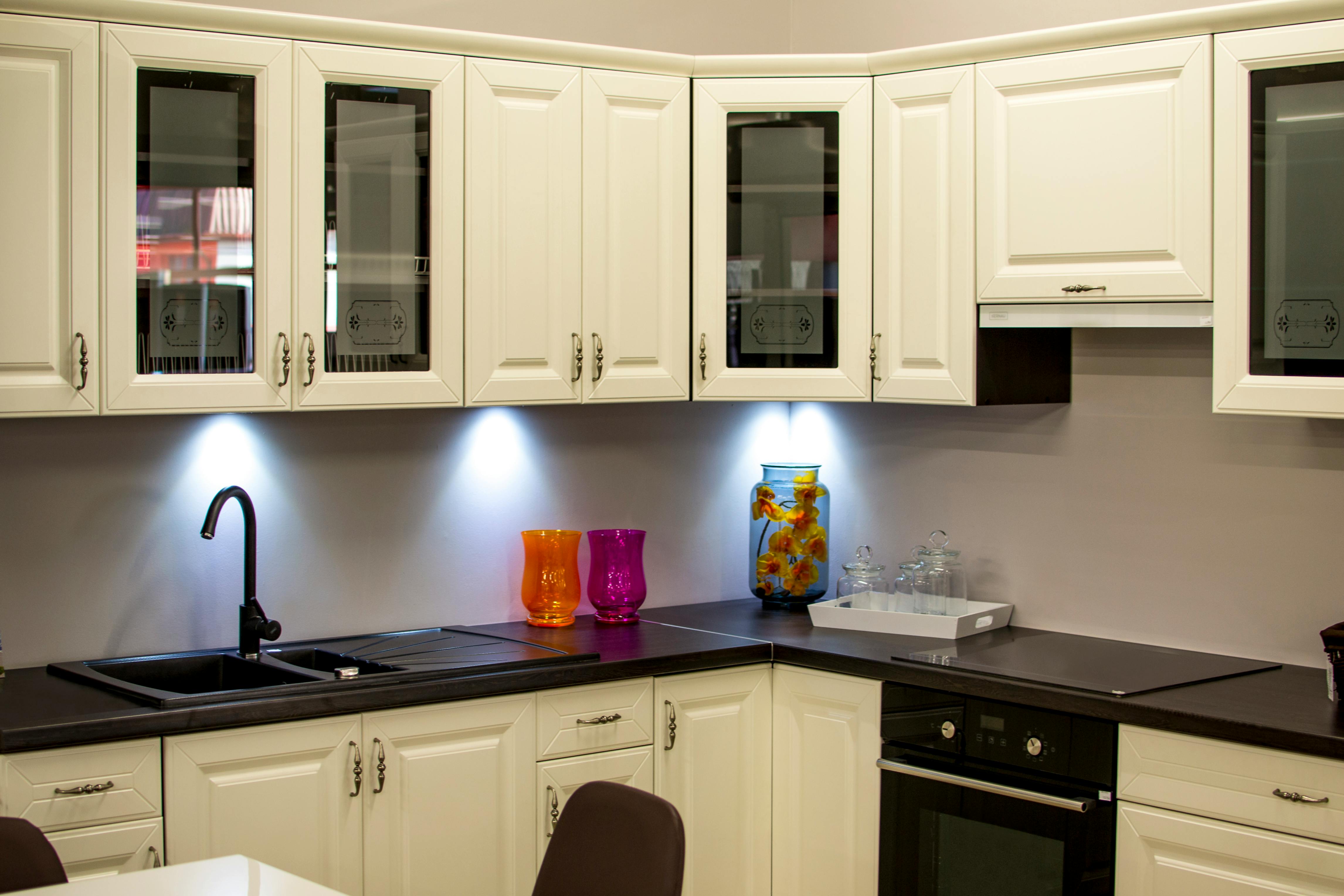 In addition to safety, living in place kitchen design also promotes independence and comfort for individuals of all ages. By incorporating features such as pull-out shelves, touchless faucets, and adjustable countertops, individuals can easily access and use the kitchen without assistance. This not only promotes independence but also allows individuals to continue living in their homes for longer periods of time, rather than having to move to an assisted living facility.
Overall, the concept of living in place kitchen design is centered around creating a functional and inclusive space for all individuals. By utilizing universal design principles, homes can be modified to accommodate the changing needs of individuals as they age, allowing them to maintain their independence and quality of life.
With the growing aging population, it is essential to consider these design principles when remodeling or building a new home. Investing in a living in place kitchen design not only adds value to your home, but also ensures that it will be a safe and comfortable space for you and your loved ones for years to come. So, if you're looking to create a kitchen that is both functional and inclusive, consider incorporating living in place design concepts into your home.
In addition to safety, living in place kitchen design also promotes independence and comfort for individuals of all ages. By incorporating features such as pull-out shelves, touchless faucets, and adjustable countertops, individuals can easily access and use the kitchen without assistance. This not only promotes independence but also allows individuals to continue living in their homes for longer periods of time, rather than having to move to an assisted living facility.
Overall, the concept of living in place kitchen design is centered around creating a functional and inclusive space for all individuals. By utilizing universal design principles, homes can be modified to accommodate the changing needs of individuals as they age, allowing them to maintain their independence and quality of life.
With the growing aging population, it is essential to consider these design principles when remodeling or building a new home. Investing in a living in place kitchen design not only adds value to your home, but also ensures that it will be a safe and comfortable space for you and your loved ones for years to come. So, if you're looking to create a kitchen that is both functional and inclusive, consider incorporating living in place design concepts into your home.
